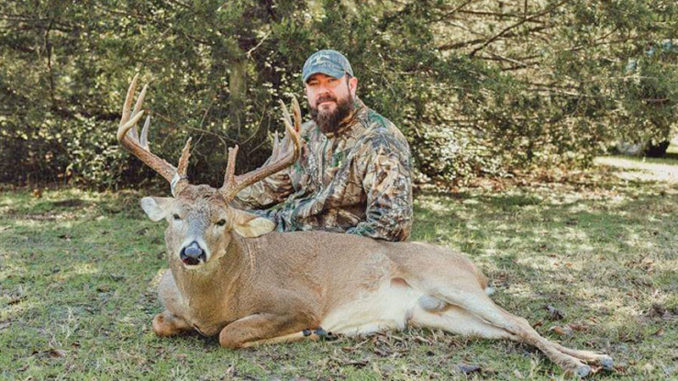
Rick Guillot’s strategy for choosing the whitetail bucks he targets is simple.
If they’re not big enough for him to send to the taxidermist, he’ll let them walk.
It seems to be working. Over the past dozen or so years, Guillot has killed and paid for mounts of 10 trophy bucks, some of them on a piece of property he hunts near Loggy Bayou in Red River Parish, not far from his home in Elm Grove.
Let them grow
A month ago, he tagged the latest member of that group, a wide, heavy 12-point, 155-inch buck that he had passed on the previous year because he believed the buck would get bigger and better.
“We had several photos of him last year; he was a 13-pointer with a sticker point,” Guillot said. “We decided he could use another year as well believed he was 3 ½ years old.
“If you want to kill big bucks, you’ve got to let the 3 ½-year-olds, the 120-inch bucks, walk; you have to get them at 4 ½. The prime age is 5 ½.
“The bigger deer, the 4 ½-year-old deer, you rarely see them in daylight. I figured this season that I had a maximum of three or four days when he would run in daylight, chasing does.”
Guillot, who is part of a 2,000-acre lease near Loggy Bayou, worried early in the season that he might have made a mistake. The buck didn’t show up in any trail-camera photos until late October, when he showed up at a scrape.
“He had gained body weight and a lot more mass to his rack,” Guillot said. “That’s when I began my quest to harvest him, hunting morning and evening every day I was off. He showed up on trail cameras on two different scrapes and twice at a feeder, all between midnight and 3 a.m. I knew it was probably going to be the rut before I might get a glimpse of him in broad daylight.”
The rut
Guillot was ready when the rut arrived. On the morning of Dec. 2, he was sitting in a box blind overlooking a long, narrow gas pipeline right-of-way. At 8 o’clock, the buck stepped out, 500 yards down the pipeline from Guillot.
“Everything has to be perfect to attempt a shot at that distance, and I didn’t feel comfortable pulling the trigger,” he said. “He was headed south, and I had another box stand on the next pipeline, about 350 yards away. The two pipelines ran parallel.
“I made a split-second decision to leave my box blind, and I made my way to the other box blind, which was on top of a hill, across a beaver pond. There was a 300-acre CRP (Conservation Reserve Program) patch that I thought he’d cross on the pipeline, and I could see him from the other box blind.”
Guillot climbed into his second stand and waited 10 minutes, seeing nothing. Then, about 125 yards away, a doe came wandering across the dry beaver pond.
“She didn’t seem hurried, so I didn’t think much of it. I had been watching smaller bucks bump does in the beaver pond the past couple of weeks,” he said. “I continued to glance for the buck down the pipeline. Less than 5 minutes after seeing the doe, I caught movement again in the beaver pond, and all I could see was rack. He was traveling the same way as the doe, and I knew I was gonna get a shot at him.”
Guillot gets his chance
Guillot picked out a good opening, and when the buck got to it, he squeezed off a shot with his Remington .300 SM. The buck, shot through both shoulders, dropped immediately.
“I watched him for a couple of minutes to make sure he was down for good, and then I couldn’t wait to get my hands on him,” he said.
And for good reason. The buck had lost his sticker point from 2018 but had a much bigger, 6×6 main-frame rack with an 18-inch inside spread. It weighed 240 pounds and was green-gross scored at 155 inches.
“I guess he got in the CRP patch between the two stands and he humped that doe in there,” Guillot said.
After tagging the buck, Guillot began to hear more about him.
“We didn’t have any trail-camera photos of him until late October, nothing,” he said. “There is a major bayou on one side of our property, and the guys on the other side were feeding protein last year very hard. They had him on camera all summer. We didn’t get a picture of him until the last day of October, then he was real sparse. He finally began showing up more regularly, but never in daylight until the day I shot him.”